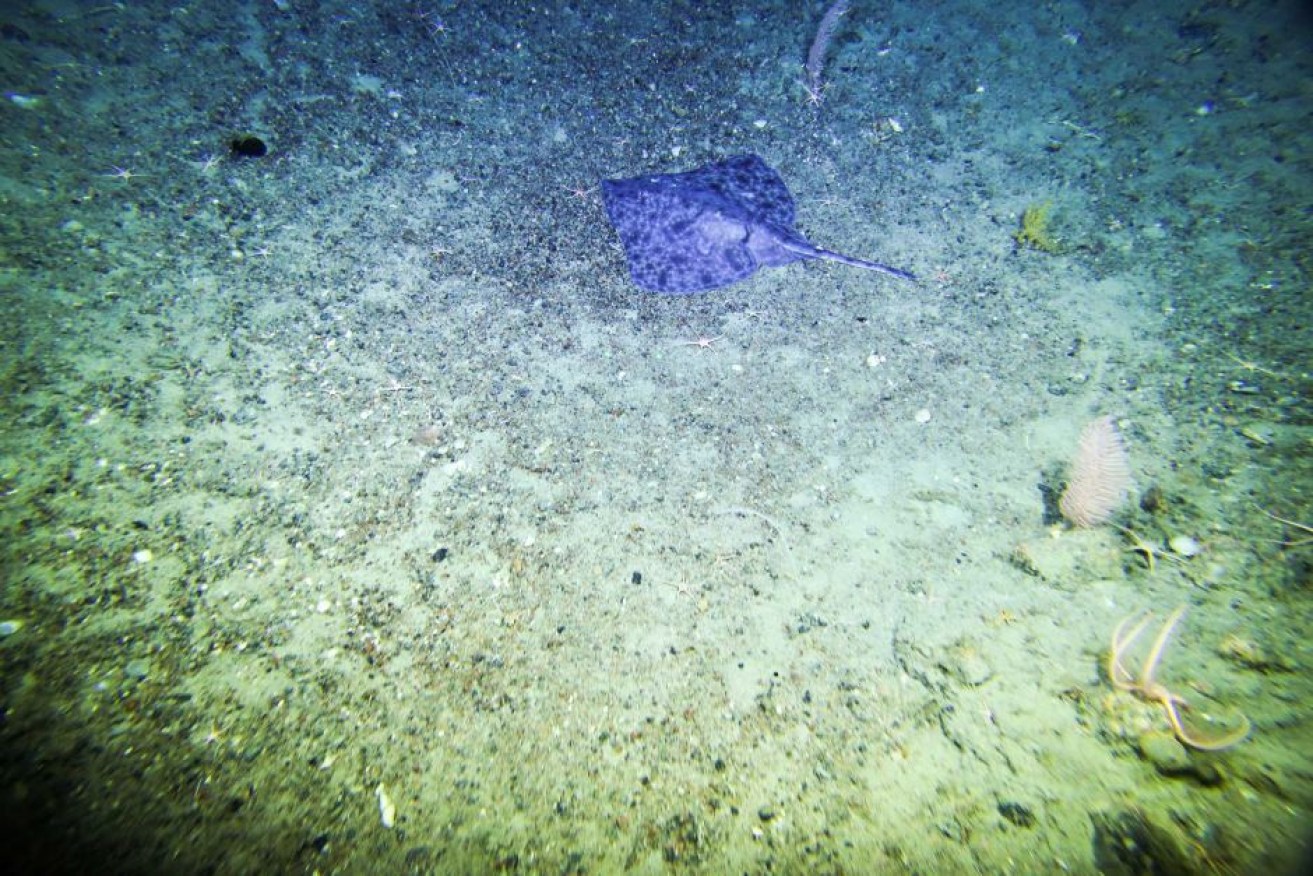New underwater film to support Antarctic protection application

The "kaleidoscope of colour" includes rays and sea stars. Photo: CSIRO
Never before captured vision of the “harsh and hostile” sea floor off Antarctica’s Sabrina Coast, will be used to support an application to make the region a Marine Protected Area.
Using an underwater camera, researchers on board the CSIRO’s Investigator have filmed the region lying off the Totten Glacier, in east Antarctica.
It is the Investigator’s furthest trip south, with scientists hoping to map the future of the enormous glacier, which is being melted by warmer ocean waters.
Alix Post from Geoscience Australia is leading the sea mapping research.
“Some of the organisms that we’ve seen include sea stars, octopus, rays, brittle stars, all sorts of different fish and even colourful soft corals,” she said.
“There’s a kaleidoscope of colour.”
The temperature is close to zero on the sea floor, leaving researchers surprised by the abundance of life.
“It’s really life in a most unexpected place. It’s a really hostile and harsh environment,” said Dr Post.
“These organisms are living at extreme pressure, at depths of up to 2000 metres from the images that we’ve taken.”
In the shallower water, the sea floor has been gouged by icebergs that have broken off the continent and ripped through the seabed “like a bulldozer”.
“That wipes out sea floor organisms, but then it provides an opportunity for others to move in to the mountains of mud and rock that are pushed up,” she said.

Brittle sea stars make the most of the disturbed seafloor off the Totten Glacier, in eastern Antarctica. Photo: CSIRO
Icebergs breaking off are part of nature’s cycle, but it may be being accelerated due to climate change.
Scientists on the Investigator are currently trying to understand more about the climate cycle affecting the Totten Glacier, analysing core samples dating back hundreds of years.
The vision captured by Dr Post’s team will support an application to make the sea surrounding East Antarctica a Marine Protected Area.

Jellyfish are not perturbed by the extremes of pressure and cold. Photo: CSIRO
The international Commission for the Conservation of Antarctic Marine Living Resources, or CCAMLR, will consider that proposal at its next meeting in Hobart, in October.
Andrew Constable from the Antarctic Climate and Ecosystems Cooperative Research Centre said the pictures could strengthen the current proposal before CCAMLR.
“This area is unique and hasn’t been looked at before, and so it will add value to providing the coverage needed for nations to be able to consider the proposals fully,” Dr Constable said.
“Wherever we look we have an amazing array of biodiversity, and what we also find is there’s a lot of uniqueness about these different places.”
The Investigator is due to return to Hobart in March.
-ABC








